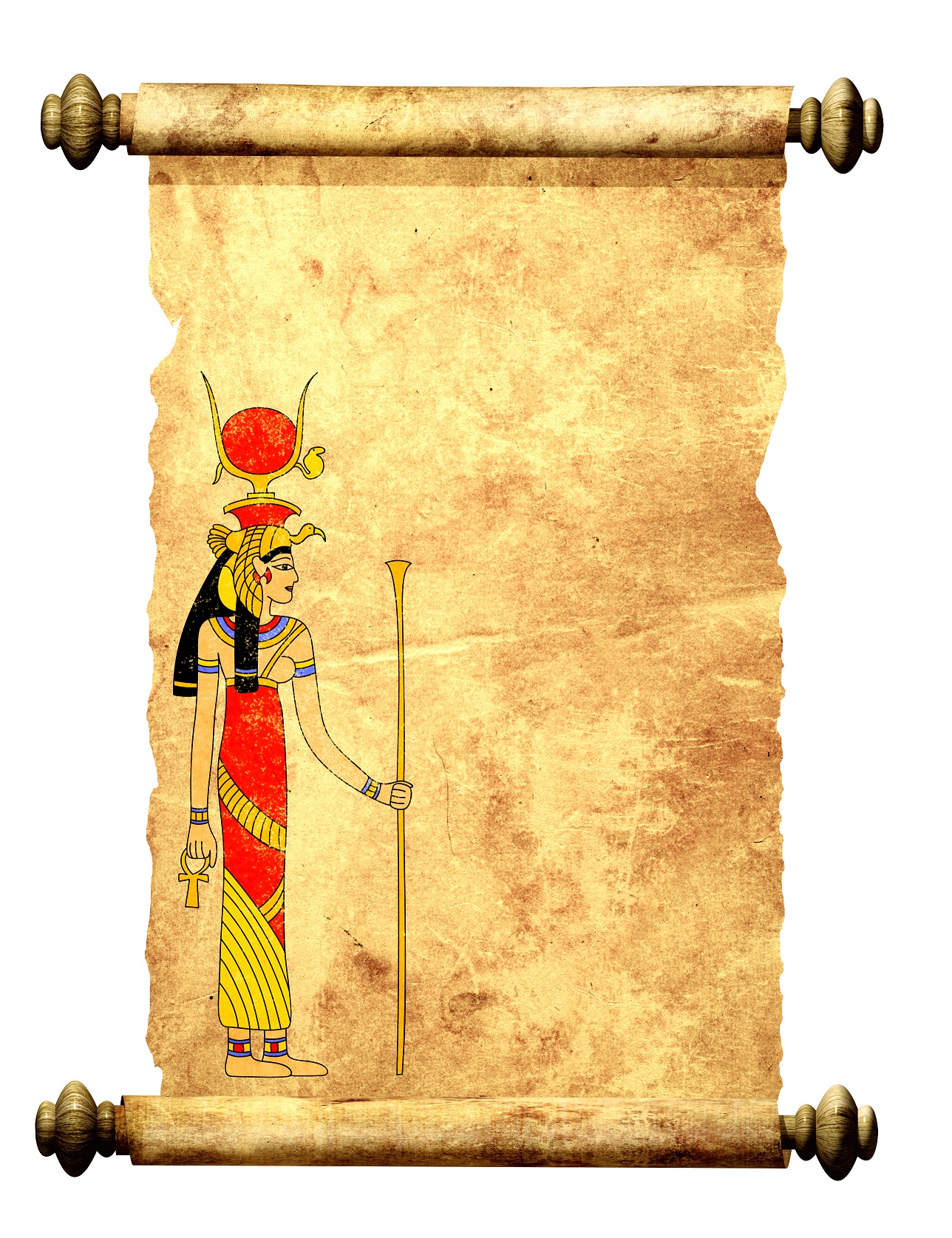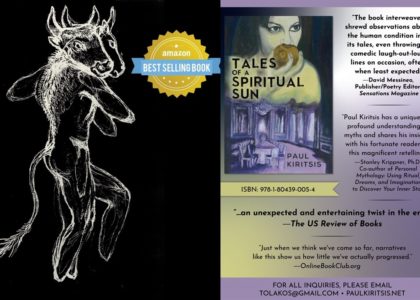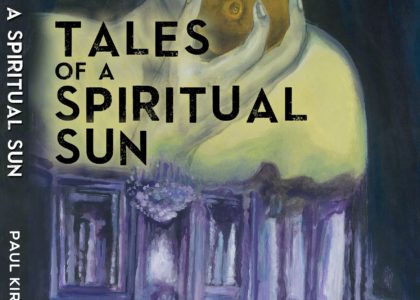
After gathering the dismembered parts of her brother-husband, the stoic Isis decided that it would be best to retire to some remote edge near the Nile Delta, a place from where she could gain some perspective on Seth’s inherent nature and calculate her subsequent move. But it wasn’t long before her newfound quietude was interrupted by ibis-headed Thoth, the god of writing, who informed that the best protection against the malevolent forces was one in which she was constantly on the road. Beset by fear for the life and wellbeing of Horus, her only son by Osiris, she steadfast gathered her belongings before calling upon seven scorpions to illumine a safe way through the treacherous marshes. Isis and her entourage left at dawn, walking as unobtrusively and vigilantly as possible as to avoid drawing attention to themselves.
At some point they become conscious of their overwhelming fatigue and decide that the best course of action would be to overnight at a nearby town called the Town of the Two Sisters. Amidst a nest of extravagant edifices, Isis reasoned that these opulent folk would be compassionate and generous enough to offer temporary lodgings to the less fortunate souls of the neighbourhood. Boy was she wrong! A courteous knock on the door was answered with an irreverent verbal scalding followed by the proverbial door slam. Isis was heartbroken and proceeded to look elsewhere for hospitality.
Angered beyond reckoning by this perceived wrongdoing, the seven scorpions huddled together and combined venom from their tails into a lethal cocktail which was then shuttled by the swiftest of the army beneath the household door and into the flesh of the woman’s youngest son. Sight of her son’s puncture wound sent the bad-natured woman into a frenzy, and it wasn’t long before she flung open the front door and emerged into a street permeated by graveyard silence, screaming at the top of her lungs: “Help me! Help me! A scorpion has bitten my precious boy!”
It seemed as though her cry might fall on deaf ears until Isis, who had taken up residence at a peasant girl’s house nearby, heard the commotion and emerged from her quarters to investigate. Renowned for her magnanimous and altruistic nature, Isis was too moral a goddess to be influenced by prior wrongs committed against her character; she assured the distressed woman that she would dispel the poison from her son’s dying body. In what was obviously an optimistic turn of fate, Isis trudged into the affluent household from which she’d been rejected and took the dwindling child into her arms. Then she recited a magical incantation that involved naming each of the seven scorpions, thus bringing the potency of their venom under her direct governance. Cradled like a precious infant against her divine breast, the boy recovered from his near-death state and regained his former robust rose-coloured complexion. Everybody in the immediate family was most grateful for this selfless act, including the child’s mother who expressed her earnest gratitude by bequeathing to Isis and the peasant girl her entire fortune.[1]
First and foremost, it would be wise for a discussion about illness and belief in an ancient culture to be preceded by a summa outlining the cosmological assumptions of that culture. The ancient Egyptians viewed the cosmos with glasses tinted a different shade of rose to what we’re accustomed today. In their eyes supranormal forces pervaded every nook and cranny, both the spiritual and material realms, and could be summoned to bend nature one way or another, either to the advantage or detriment of an individual or diagnostic group. The spoken word and the craft of writing had been inherited from the theriomorphic pantheon and were creative forces in their own right. Ancient Egyptians possessed a hallucinatory mentality where the superimposition of realities and concepts was not seen as contradictory or illogical; one ontological substrate merely coexisted with all the others. These realities were interwoven together with an invisible golden thread, a living system of correspondences linking concepts, thoughts, and sentiments with specific objects, materials, or living organisms. Potential dangers from the environment could be actively guarded against or depotentiated by disrupting causal relationships in the natural order, often with the aid of apotropaic devices like amulets inscribed with divine symbols (i.e. the udjat-eye, the ankh of life, the scarab beetle, etc.) and verbal incantations. Another name for this phenomenon is magic, and it was an inexplicable, critical, and indivisible component of ancient Egyptian life, as fundamental to their perception and understanding of the universe as what the physical and natural sciences are to ours.
In the two thousand or so years of religious and socio-political upheavals, intellectual movements, warfare, and bloodshed that separates us from the tail end of this pious and mysterious civilization, one thing has remained fairly constant–our fraught sentience of environmental hazards. Self-preservation will forever remain transcontinental and transcultural. We can understand the awkwardness and nervousness felt by an ancient Nile settler at the sudden sight of a serpent crawling out from under an adjacent rock, or the purposeful hovering of crocodiles in marshes of the Delta and the riverbank, precisely because the same creatures threaten our individual survival today. Moreover cognitive neuroscience tells us that the human cerebral cortex doesn’t reach full maturity until late in the second decade of life, meaning that primary consciousness coagulates under the mediation of our primitive brains, the brainstem and limbic system.[2] Stimulus appraisals and interactions being encoded by subcortical brain structures at this time swiftly lapse into unconsciousness, pre-programming what we later experience as a conscious self proficient in reflection, complex verbal and semantic communication, and prosocial behaviour with assumptions erroneously mistaken for irrefutable truths. The unwavering ability of these assumptions to dictate cognitive and behavioural patterns after maturation of the prefrontal cortex and simultaneously remain inaccessible to conscious awareness is what renders them so powerful in determining outcomes. As we know from personal experience, it’s simply impossible to amend or transform emotional or sensory-based programs that fly under our conscious radars.
To our detriment the subcortical structures responsible for this critical interpersonal learning are especially alert and susceptible to visual displays of suspiciousness and negativity; hence information from the environment being encoded into a coherent sensory and emotional worldview by the limbic regions during childhood is heavily biased towards the expression of negative affect, primal fear, and stress. With increased sensitivity to possible dangers, all environmental contingencies which inspire even a sliver of indecision in the solicitation of a child’s fight or flight response will be relegated to the latter. In other words the will to abscond overpowers the will to contest. For this we can thank our primitive ancestors, the apes and the baboons. Without such an inbuilt preservation mechanism, we can rest assured that Mother Nature would have relegated us to her inexhaustible “Now Extinct” list of experimental losers hundreds of thousands of years ago!
Whereas we, as inheritors of Western capitalism, prefer to ascribe dire consequences wrought from such collective dangers to unfortunate stokes of luck, bad timing, or simply ‘fate’, the ancient Egyptians encoded subliminal messages into mythological narratives to mitigate the human inclination towards pessimism. The early myth-makers understood on an intuitive level that there was no better way to do this than to offer an archetypal representation of a positive outcome that was, to all intents and purposes, the only possible outcome. Encoding salvific sentiments into collective mythologems intended to condition responses to certain environmental dangers was an exceptional way of boosting the morale of the rustic population and quelling their uncertainty.
Inscribed onto a stone tablet called the Metternich Stela,[3] Isis and the Seven Scorpions outlines step-by-step instructions on how scorpion bites should be handled, making it a fine example of instructional literature of this salvific type. The inscription on the tablet also includes a number of magical incantations that one can recourse to if on the receiving end of a scorpion bite, as well as a prescription of barley-bread, salt, and garlic intended to exfoliate the venom. We could safely infer that it wasn’t so much the therapeutic properties of the ritualistic items as the belief in the power of incantation to depotentiate the venom that augmented the resolve of real-life victims and thus their survival prospects. Talk about a collective placebo if there ever was one! If myths embody the cultural attitudes, the desires, the hopes, and the goals of the peoples that gave birth to them, then there’s no reason why they shouldn’t also enable a collective placebo effect by projecting subliminal information about proactive problem-solving. Positive thinking mostly breeds affirmative outcomes. The message reverberating loudly in the aforementioned myth seems to be, “Isis would not be so fickle as to allow your child to die of something as trivial as a scorpion sting.”
In the myth we see that Isis heals the child by naming each of the seven scorpions in turn. Here, the act of ascertaining the causal relationship between pathogen and host via labelling expresses the healer’s supremacy over matter. By naming something we acknowledge it as something outside oneself, as ontologically separate from a sentient observer’s field of perceptual surveillance; by acknowledging it we experientially validate that the host’s physical and mental suffering isn’t just an unfortunate by-product of false perceptions, assumptions, or imaginings, and that further, there must be a way of exorcising this entity from the physical body or self. The book of nature states that for every disease or homeostatic imbalance there is an antidote. The prospect of a cure paves the way for hope, which together with the authoritative figure of the doctor or healer herself functions as a potent placebo in the fruition of successful therapy. There’s nothing more able to drive one to the brink of disillusionment and death than inner turmoil fuelled by intuitively held beliefs that remain unrecognized, misjudged, or unresolved. Other than suppressing immunological function through oversaturation with cortisol and the inhibition of protein synthesis, the life stream of all cells, chronic stress creates biochemical changes in the body that reduce neural plasticity and glial density, depress neurons, and eventually cause cell death.[4] Over time these detrimental modifications appear as decreases in hippocampal volume and drastic alterations in the cortical and subcortical circuitry responsible for cognitive and behavioural patterns. In the end an individual can only go in one of two polar directions: the way of psychopathology, for instance clinical depression and psychosis, or the way of anomalous cell proliferation, the abode of tumours and cancers.
The myth defends against the evolution of the above scenario by couching all possible experiences within a comprehensible and optimistic narrative, thus conditioning the collective to subliminally accept an archetypal reality where fatal attacks from dangerous creatures like scorpions and serpents can and will be mitigated. For a layperson, the existence of an empirical blueprint through which such dilemmas might be overcome is more than enough to put the mind at rest, at least on a subjective level. Further, the lucid presentation of a goal-orientated activity, in this case a cure in the guise of a powerful magical incantation, also guides a victim away from overwhelming affect, fatalistic thinking, and the calamity of self-fulfilling prophecies. Finally, providing a contextual progression from crisis point to resolution disgorges a sufferer from the darkest of descents, the feeling of being alone in a vast and desolate cosmos. It’s an assurance worth all its weight in gold. Isis, the great healer, is always beside you like a guardian angel, protecting you and your progeny from every external threat. What more could one hope or ask for?
Once cognized, myths will go on to define the socio-political hierarchy, pscychospiritual nature, and belief system of an entire culture. In fact they reflect the deepest perceptions and ethos of that culture, revealing how its peoples interface and interact with the environment, and what effect this integral dichotomy has on the collective psyche. Turning now to the globalization of materialistic capitalism so ostensive today, what collective myths and narratives have we pioneered to extricate us from the dark excrements of our own cognitive and psychosocial conditioning? Which myths help us emerge from the Stygian landmarks of depression, heart disease, hypertension, and other contemporary illnesses? The myth of the magic pill? Do we even have any?
[1] A version of the myth Isis and the Seven Scorpions can be found in: Lorna Oakes and Lucia Gahlin, Ancient Egypt (London, UK: Annes Publishing, 2002), pp. 312-313.
[2] Louis Cozolino, The Neuroscience of Psychotherapy: Healing the Social Brain (New York, NY: W.W. Norton & Company, 2010), pp. 72.
[3] A version of the myth Isis and the Seven Scorpions can be found in: Lorna Oakes and Lucia Gahlin, Ancient Egypt (London, UK: Annes Publishing, 2002), pp. 313.
[4] A version of the myth Isis and the Seven Scorpions can be found in: Lorna Oakes and Lucia Gahlin, Ancient Egypt (London, UK: Annes Publishing, 2002), pp. 221.









